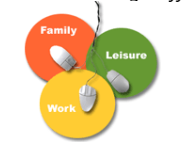These are factors in the external business environment which are outside the direct control of an organisation. These factors can threaten the success of the organisation or can create opportunities for success in the organisation.
Changes in the external environment can be summarised in the acronym PESTEC:
P |
|
Political Factors |
E |
|
Economic Factors |
S |
|
Social Factors |
T |
|
Technological Factors |
E |
|
Environmental Factors |
C |
|
Competitive Factors |
Political Factors
- Changes in laws can affect how organisations operate eg an increase in the minimum wage increases the wage bill.
- Organisations may decide to increase prices to cover costs .
- The government may increase the rate of Value Added Tax – a tax added to all non-essential goods and services.
- This will impact on the final price charged to customers.
- Updates in health and safety laws may require more protection to employees – eg the Health and Safety at Work Act.
- This will result in more spending on safety procedures and training.
Economic Factors
- If there is an economic recession and unemployment is high, consumers will have less income to spend on non-essentials.
- Organisations may need to lay off employees as a result
- Organisations may respond by reducing their prices and accepting a cut in profit.
- In an economic boom employment and income is rising across the economy.
- Organisations may be able to offer a wider range of products as consumers have more income to spend. They may be able to re-invest profits to expand or develop new products.
Social Factors
Changes in the structure and lifestyles of the UK population have led to changes in patterns of consumer demand.
- People living longer and a falling birth rate are leading to increased demand for health products and more people delaying retirement.
- Organisations may change their product range and need to be willing to retrain older employees to bring their skills up to date.
- Consumers are more concerned with their diet and exercise – leading to demand for sports and leisure products, and organically grown produce. .
- This is impacting on an organisation’s choice of supplier, production methods and product range offered for sale.
Technological Factors
- Organisations must keep up with advances in technology. The growth of smart technologies means that consumers can shop any time, any place.
- Advances in technology create opportunities for more innovative products. Organisations need to continually update their product specifications to keep up with technological developments.
- Advances in production technology means that production methods can be more efficient eg use of automation / robots.
- This can speed up output, improve accuracy and reduce average costs.
Environmental Factors
- Certain natural resources are becoming scarcer and more expensive to access.
- Organisations must move towards reusing and recycling to make resources go further (overlap with social and political pressures here).
- A natural disaster may reduce the supply of certain materials eg a crop failure. Distribution can be disrupted by extreme weather conditions eg storms, floods and snow which may be side effects of climate change.
- Organisations must plan how to overcome these problems eg by finding alternative types of materials, choosing suitable methods of transport or by using local suppliers.
Competitive Factors
The actions of competitors are a huge threat to any organisation. Organisations must strive to stay ahead of their competitors:
- Develop newer and better-quality products;
- Offer products for sale at more competitive prices;
- Make their products available in a wider range of places;
- Carry out promotional activities to inform, persuade and retain customers.
For example, Asda have a Price Guarantee. If you could have got your shopping cheaper at another supermarket, they will refund you the difference.
This has prompted rivals like Sainsbury’s and Tesco to offer similar price matching guarantees, resulting in smaller profit margins for all. Organisations must continually review their marketing mix – product, price, place and promotion – to ensure they remain competitive.
- Organisation must also remain competitive in the job market or risk losing their best employees to their competitors.
- This may involve offering higher salaries, more flexible work practices, and by offering attractive career opportunities.









